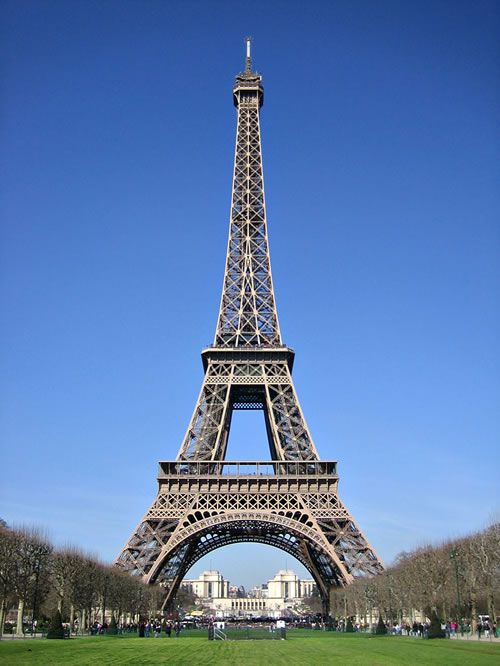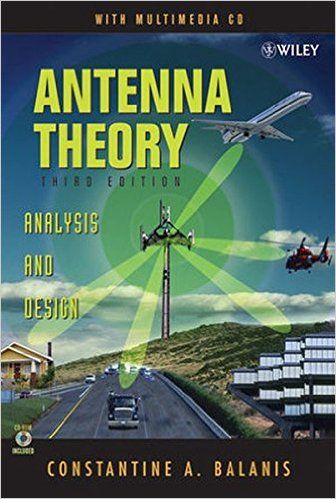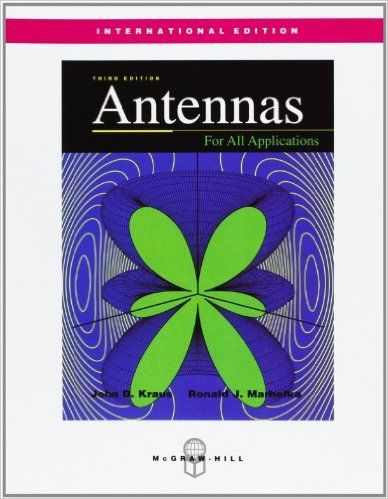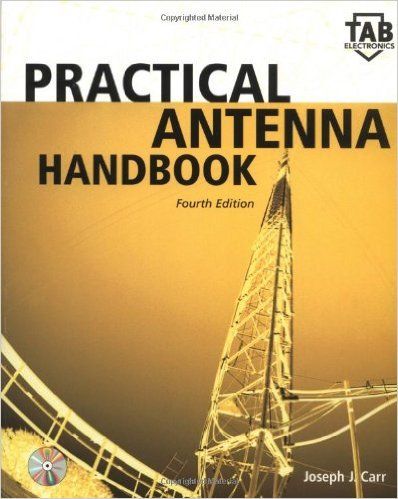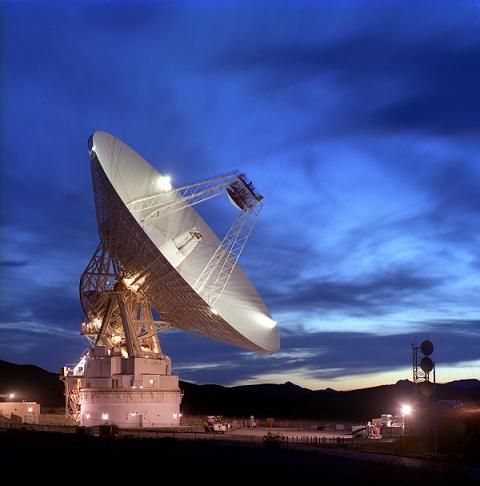http://www.antenna-theory.com/intro/main.php
Introduction to Antennas
In the 1890s, there were only a few antennas in the world. These rudimentary devices were primarly a part of experiments that demonstrated the transmission of electromagnetic waves. By World War II, antennas had become so ubiquitous that their use had transformed the lives of the average person via radio and television reception. The number of antennas in the United States was on the order of one per household, representing growth rivaling the auto industry during the same period.
By the early 21st century, thanks in large part to mobile phones, the average person now carries one or more antennas on them wherever they go (cell phones can have multiple antennas, if GPS is used, for instance). This significant rate of growth is not likely to slow, as wireless communication systems become a larger part of everyday life. In addition, the strong growth in RFID devices suggests that the number of antennas in use may increase to one antenna per object in the world (product, container, pet, banana, toy, cd, etc.). This number would dwarf the number of antennas in use today. Hence, learning a little (or a large amount) about of antennas couldn't hurt, and will contribute to one's overall understanding of the modern world.
Antenna Theory History
What is the origin of the antenna? I'm ruling out such early devices as compasses, because while they in some sense receive a magnetic field, it is not an electromagnetic field. Ben Franklin's kite experiment wasn't quite an antenna, as that captured lightning discharge, which is a direct current path where the energy is not transferred independent of the medium it travels. The human eye of course receives high frequency electromagnetic waves (light, to the layman). Technically the eye could be classified as an antenna; however since it can't transmit waves, it is really a sensor, so I'll exclude that as well.
The first experiments that involved the coupling of electricity and magnetism and showed a definitive relationship was that done by Faraday somewhere around the 1830s. He slid a magnetic around the coils of a wire attached to a galvanometer. In moving the magnet, he was in effect creating a time-varying magnetic field, which as a result (from Maxwell's Equations), must have had a time-varying electric field. The coil acted as a loop antenna and received the electromagnetic radiation, which was received (detected) by the galvanometer - the work of an antenna. Interestingly, the concept of electromagnetic waves had not even been thought up at this point.
Heinrich Hertz developed a wireless communication system in which he forced an electrical spark to occur in the gap of a dipole antenna. He used a loop antenna as a receiver, and observed a similar disturbance. This was 1886. By 1901, Marconi was sending information across the atlantic. For a transmit antenna, he used several vertical wires attached to the ground. Across the Atlantic Ocean, the receive antenna was a 200 meter wire held up by a kite [1].
In 1906, Columbia University had an Experimental Wireless Station where they used a transmitting aerial cage. This was a cage made up of wires and suspended in the air, resembling a cage [2].
A rough outline of some major antennas and their discovery/fabrication dates are listed:
- Yagi-Uda Antenna, 1920s
- Horn antennas, 1939. Interesting, the early antenna literature discussed waveguides as "hollow metal pipes".
- Antenna Arrays, 1940s
- Parabolic Reflectors, late 1940s, early 1950s? Just a guess.
- Patch Antennas, 1970s.
- PIFA, 1980s.
Current research on antennas involves metamaterials (materials that have engineered dielectric and magnetic constants, that can be simultaneously negative, allowing for interesting properties like a negative index of refraction). Other research focuses on making antennas smaller, particularly in communications for personal wireless communication devices (e.g. cell phones). A lot of work is being performed on numerical modeling of antennas, so that their properties can be predicted before they are built and tested.
References:
[1] Balanis, Constantine. "Antenna Theory: A Review", Proceedings of the IEEE, vol. 80, January 1992.
[2] W2AEE Antenna History. Arthur M. Kay, scanned by Alan Crosswell. http://www.w2aee.columbia.edu/history/antenna-history.html
Antenna Fun
- The Antenna Theory Crossword Puzzle
-
In 1913, the Eiffel Tower was used an antenna. Back when communication was at very low frequencies, the antennas had to be very large to get any sort of radiation. The Eiffel Tower fit this bill well, and was used to communicate with the United States Naval Observatory in Arlington, Virginia.
- Joke:Two antennas met on a roof, fell in love and got married. The wedding wasn't great but the reception was excellent.
Antenna Theory Book Reviews
A good book on antenna theory would look nice on your bookshelf. And girls really like antenna books. Sometimes you get sick of reading things on the internet, and want a comprehensive antenna book to read. On this page, I'll review some of the popular antenna books available.
The first 3 of these books are more theoretical and have a good chunk of math in them and less hands on material. These books are tricky to write because the math for antennas gets extremely complicated quickly, so once an antenna has a non-simple shape (not a wire), the math becomes intractable. So there's always a tradeoff in complex math and what you really need to know to learn about antennas. The last 2 are more hands on build-your-own antenna type books, where you can learn what you need to without unnecessary math.
1.Antenna Theory
Constantine A. Balanis is a well known name in the antenna world. To be fare, he was my dissertation adviser, so I'm a little biased. He's a surprisingly sociable guy for an antenna person. Anyway, about his book Antenna Theory: Analysis and Design. This is the largest of the major antenna books, and is used by a large number of American Universities in teaching undergraduate and graduate level courses on antennas. He is very thorough, and tries to walk through the concepts and tractable derivations throughout the book.
The thoroughness is often considered a fault by some people, in that things are explained sometimes in a long-winded manner. However, this is often advantageous if you haven't seen the material in a while. He treats all the major antenna types, discusses arrays, has a chapter on measurements and smart antennas.
All in all, this is a good book and understandable. It is quite large though. And if after a thousand pages or so you still want more, the book does come with a CD for visualizing things and aids in understanding certain concepts, if you are interested in that sort of thing.
2.Antenna Theory and Design
Stutzman and Thiele's Antenna Theory and Design is another popular antenna book. This is used at many universities as well, and was the Master's or Late Undergraduate course book on antenna's I used as a masters student at Stanford.
This book is much smaller than Balanis' book. Despite its size, this book manages to hit a large number of the topics that Balanis does. The math is probably more advanced than that in Balanis' book, but nothing intractable if you are well versed in your undergraduate level vector calculus. One problem with it is that some topics are only glossed over with little detail, such as slot antennas. References are provided if you are so inclined and wish to learn more.
All in all, I think this book is great and if you are a quick learner you will probably prefer this to Balanis. If you've been out of practice for a while or are rusty on things like math you might be better off with Balanis' book.
3.Antennas
Kraus's Antennas book is formerly known as the "Antenna Bible". This book was the standard many years ago, and gives a very good treatment of antenna theory.
This book has good photographs and figures. The math is challenging and some people dislike it because a lot of the text focuses on using math to simplify things or derive auxilliary sources or things like that. However, the author does make an attempt to explain what the math means.
This book would work as your antenna theory textbook. For whatever reason, I believe it has fallen out of favor somewhat with the new generation of engineers, but if you are looking to learn how antennas radiate and about the fundamental antennas, this book will take you there.
4.Practical Antenna Handbook
This book, The Practical Antenna Handbook (Joseph Carr) will be very helpful to a lot of people. If you are a practical, hands on guy and don't care about stupid complex math that doesn't matter, this book is for you. This book contains step-by-step instructions for building antennas and attempts to make everything real-world and not theoretical as some of the former books do.
If you are going to be a research antenna engineer and publish papers, you don't want to start with this book. But if you are into building things and just want to slap on workable antennas to your projects or get a hands on overview of making transmitters and receivers work, this book will do nicely.
And true masters of the antenna world should have knowledge of both the theory and the practical skills. So if you are purely a math jockey and need to expand your knowledge base, this might be a good book to pick up, and is fairly priced.
5.The ARRL Antenna Book
Another practical handbook is The ARRL Antenna Book: The Ultimate Reference for Amateur Radio Antennas, Transmission Lines And Propagation. This book is a classic, and I mean it goes back to 1939 before people even knew antennas existed. This is a good book for practicing engineers and amateurs, as it attempts to give the theory and hands on antenna projects.
While this book does date back to 1939, it has been updated to include modern techniques, such as the slide rule (joke). It incorporates reference to Vector Network Analyzers (VNA), a must have antenna measurement tool.
At just under 1000 pages, this is a large book, but well worth the price. Also covers transmission line theory and propagation, which should be understood as well.
In sum, everyone who I know who owns the book swears by it. They love it. It provides a good balance between the required theoretical skills and hands on techniques that make for a solid antenna engineer.
About the Author(s)
This page has been written by a small but finite set of aliens with a passion for spreading antenna knowledge. While this passion may seem strange, it is actually quite common outside the milky way. A human or two has contributed to this page (notably Peter Bevelacqua), but they are mainly kept on the team to understand the web-human interface.
Keep watching the stars.
McNasty, 0*3^H:2

